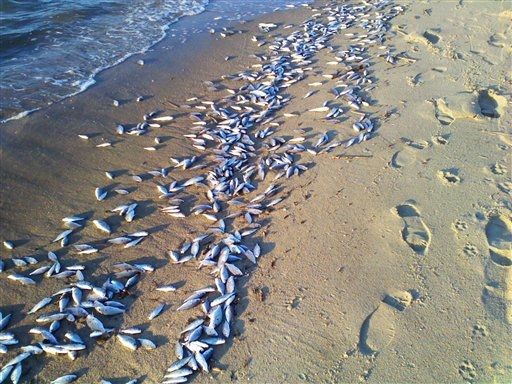
It could be two weeks before state officials know for certain what killed an estimated 2 million fish in the Chesapeake Bay. Or, they may never find out the exact cause.
Biologists with the Maryland Department of the Environment sent tissue samples from the fish, mostly juvenile spot 3- to 6-inches long, to state labs to pinpoint the reason they died. But for now, they believe a rapid drop in temperature in December caused cold-water stress, said MDE spokeswoman Dawn Stoltzfus.
Stoltzfus said there are no indications that water quality or pollution contributed to the kill, but the tissue samples will be analyzed for contaminants. Samples also will be sent to the Department of Natural Resources for bacteria analysis. However, she cautioned that "most, if not all, of the fish may be too decomposed to expect meaningful results."
The bay's surface water temperature late last month - 32.9 degrees--was the coldest in 25 years, according to state records. Historical lows were recorded at 13 locations on the bay, from the mouth of the Elk River to Rock Hall and Kent Island to Point Lookout. Spot have little tolerance for temperatures below 35.6 degrees.
The first fish kill report came last Wednesday from Calvert County, near the Calvert Cliffs Nuclear Power Plant. MDE then received calls from Annapolis, Sandy Point State Park, Poplar Island south of Kent Island, the Honga River in Dorchester County and Tangier Sound. Contrary to earlier reports, the dead fish did not include menhaden but did include some croaker, a member of the same fish family.
Stoltzfus said no new reports have come in. MDE has a toll-free number to report dead fish: 1-866-MDE-GOTO
While summer fish kills have become a regular occurrence, winter-related kills happen less frequently. Twenty million spot died in 1976 and again in 1980, said Rudy Lukacovic, DNR's fish kill investigator for 23 years. Both of those kills ranged from Baltimore Harbor to Solomons.
"I remember being in a boat off Kent Island and looking up the bay and seeing what I thought was an ice flow moving toward me. It was a raft of thousands and thousands of dead fish," he said of the 1980 incident.
In all cases, Lukacovic said the most likely cause of death was super-chilled water reducing the effectiveness of the gill cell membranes to regulate the salt intake of the fish. Salt enters the fish at toxic levels and they die of dehydration.



Reader Comments
to our Newsletter